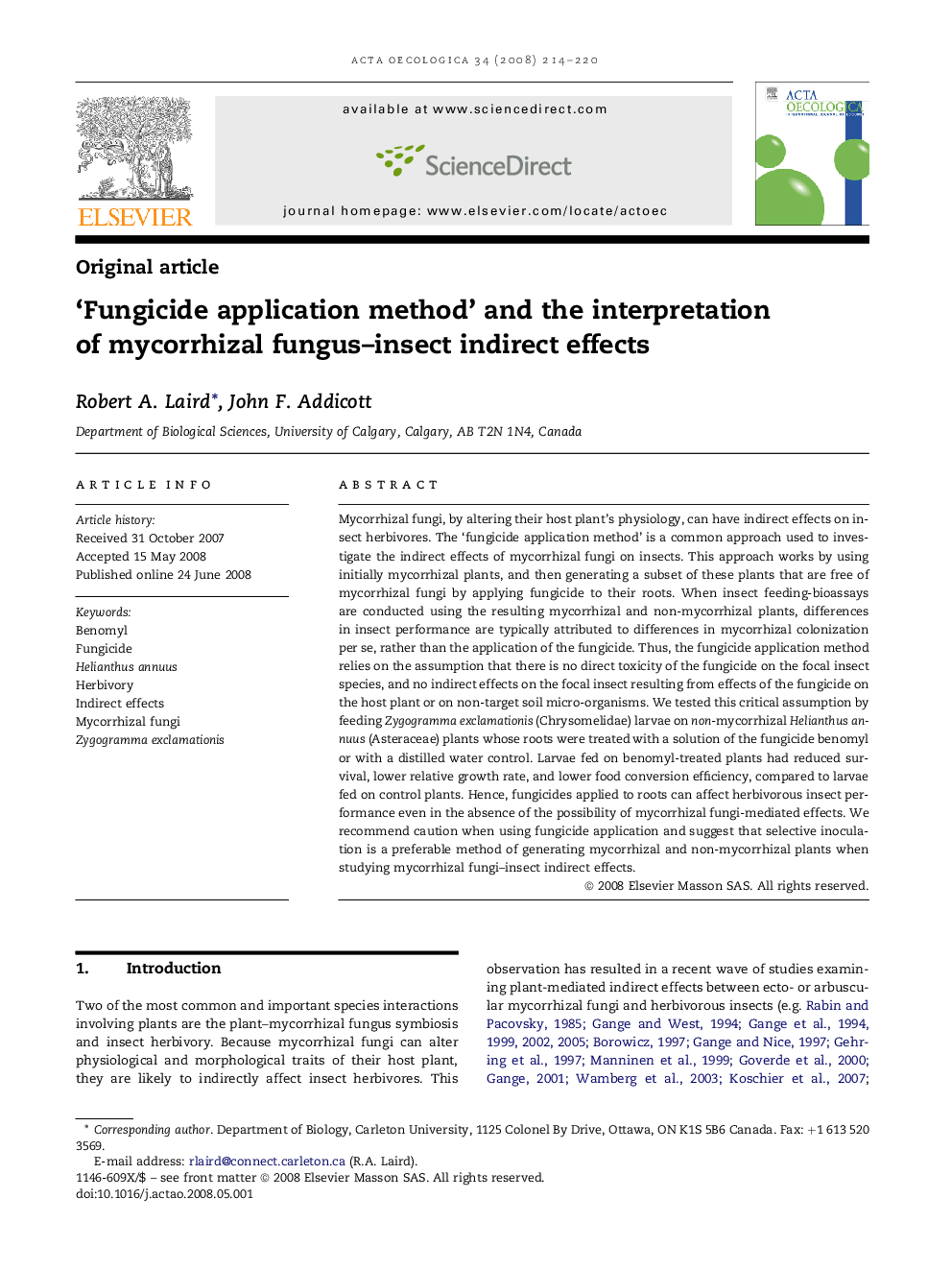| Article ID | Journal | Published Year | Pages | File Type |
|---|---|---|---|---|
| 4381525 | Acta Oecologica | 2008 | 7 Pages |
Mycorrhizal fungi, by altering their host plant's physiology, can have indirect effects on insect herbivores. The ‘fungicide application method’ is a common approach used to investigate the indirect effects of mycorrhizal fungi on insects. This approach works by using initially mycorrhizal plants, and then generating a subset of these plants that are free of mycorrhizal fungi by applying fungicide to their roots. When insect feeding-bioassays are conducted using the resulting mycorrhizal and non-mycorrhizal plants, differences in insect performance are typically attributed to differences in mycorrhizal colonization per se, rather than the application of the fungicide. Thus, the fungicide application method relies on the assumption that there is no direct toxicity of the fungicide on the focal insect species, and no indirect effects on the focal insect resulting from effects of the fungicide on the host plant or on non-target soil micro-organisms. We tested this critical assumption by feeding Zygogramma exclamationis (Chrysomelidae) larvae on non-mycorrhizal Helianthus annuus (Asteraceae) plants whose roots were treated with a solution of the fungicide benomyl or with a distilled water control. Larvae fed on benomyl-treated plants had reduced survival, lower relative growth rate, and lower food conversion efficiency, compared to larvae fed on control plants. Hence, fungicides applied to roots can affect herbivorous insect performance even in the absence of the possibility of mycorrhizal fungi-mediated effects. We recommend caution when using fungicide application and suggest that selective inoculation is a preferable method of generating mycorrhizal and non-mycorrhizal plants when studying mycorrhizal fungi–insect indirect effects.
